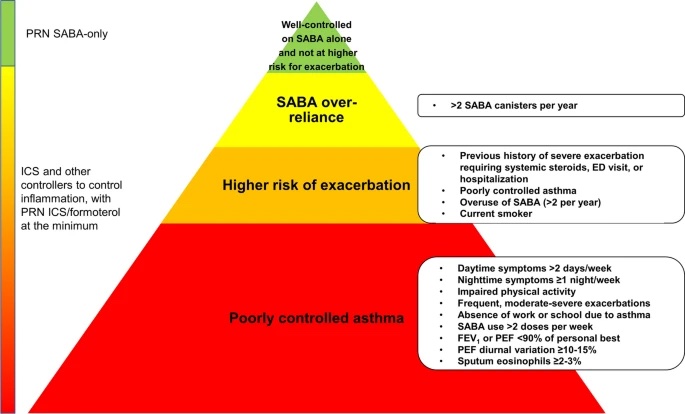Anne K. Ellis, Vanessa Foran, Alan Kaplan & Patrick D. Mitchell
Allergy, Asthma & Clinical Immunology volume 18, Article number: 48 (2022)

Abstract
Patients with asthma frequently over rely on short-acting beta-agonists (SABA) to treat acute symptoms. This can adversely impact quality of life and increase the risk of exacerbations. SABA overuse is also associated with an increased risk of mortality. In their 2021 update on the diagnosis and management of mild asthma, the Canadian Thoracic Society (CTS) newly recommended that a combination inhaled corticosteroid (ICS) and long-acting beta-agonist, specifically budesonide/formoterol, may be used as-needed (PRN) as an alternative reliever to SABA. The CTS developed an algorithm as a guide for deciding for whom PRN budesonide/formoterol versus PRN SABA is appropriate as a reliever. While the CTS algorithm provides necessary and precise guidance, the somewhat complicated requirements for determining control and exacerbation risk may still end up leaving some patients at-risk of SABA overreliance. This communication simplifies the reliever decision algorithm developed by the CTS for application in daily practice. A 30-s evaluation of 2 simple questions related to reliever use can usually accurately assess if a patient’s asthma is controlled: How many SABA canisters do you use a year AND how many times do you use SABA a week? If the patient indicates use of > 2 SABA canisters per year or > 2 administrations of SABA per week for any reason, the patient does not have controlled asthma and PRN SABA is not an appropriate treatment regimen. Similarly, for patients using PRN ICS/formoterol, more than 2 administrations per week indicates a clinical review and reevaluation of their management, including augmentation. An education process is essential to inform patients, caregivers, and healthcare providers that overuse of any reliever is not acceptable and is potentially harmful.
